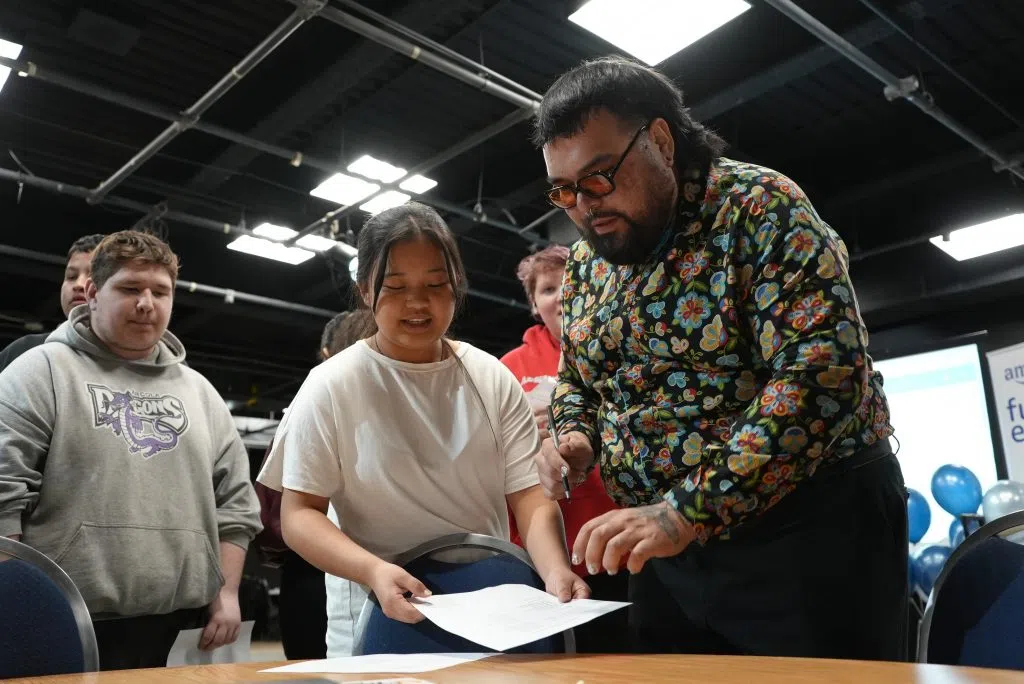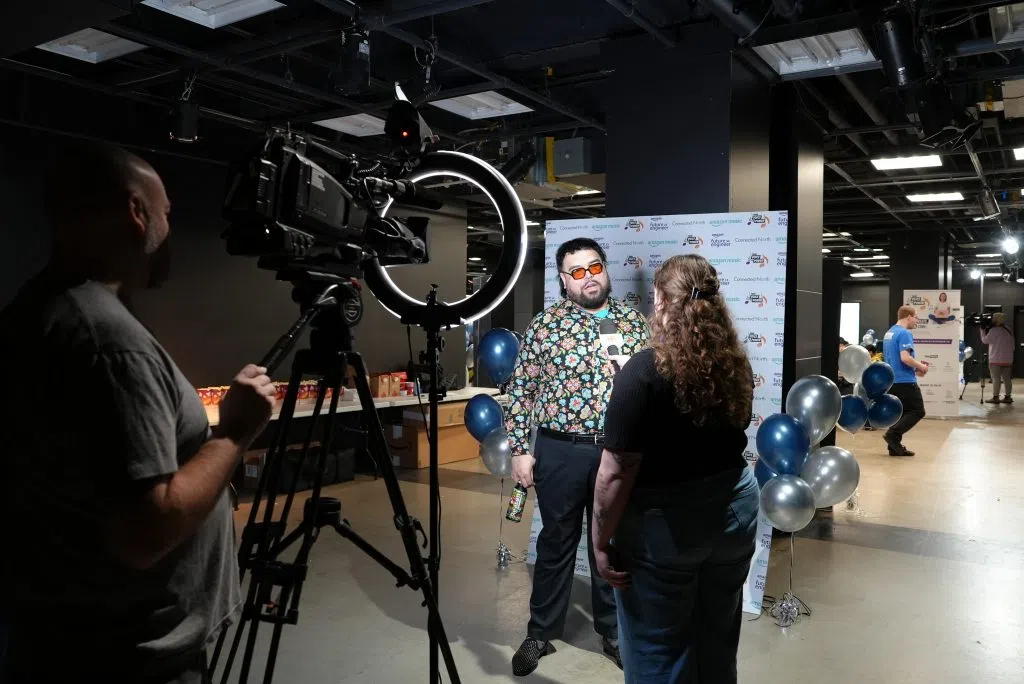
Juno Award artist Sebastian Gaskin makes Regina his first stop
Fresh off the red carpet at the 2025 JUNO Awards – where he won the prize for Contemporary Indigenous Artist of the Year – Sebastian Gaskin’s first pitstop was in Regina to speak to high school students at the Your Voice is Power conference at the Saskatchewan Science Centre.
His motivation was simple – to inspire.
“I’m hoping I can provide a North Star for certain people – to look up to and think, maybe I can do that one day,” he said. “Especially those kids growing up in small communities, who might be afraid to leave in search for something better. I hope I can provide some inspiration for them.”
The Toronto-based artist is originally from the Tataskweyak Cree Nation in northern Manitoba located about nine hours north of Winnipeg.
Fresh off his win, Gaskin has been overwhelmed with the attention he is receiving from the general public to industry big wigs.
However he was happy to be in Regina to speak to and perform for high school students from across the province.
“It’s a part of being Indigenous,” said Gaskin. “As an Indigenous person, you give back to the community, otherwise what’s the point in having all this success if you can’t share it with others?”
The Your Voice is Power conference is part of an education and remix competition program designed to give all young people the opportunity to learn computer science, entrepreneurship, and social justice. Students learn more about computer programs and coding by using the EarSketch platform to remix songs from Indigenous artists

Gaskin also took the time to chat with the students and sign autographs.
“I feel that spiritual health when I give back to the community,” he said. “It feeds my spirit and provides me with more power to move forward because I know I might be giving parts of myself to people that might need it.”
Gaskin always follows his heart.
He credits the impulse to open up and share his soul with his musical success.
Growing up in Northern Manitoba, he was immersed in his culture. This included everything from hunting and trapping with his family to helping his grandmother with her traditional beadwork to being baptized into the Anglican Church and all of it helped shape the man he’s become.
When he was around 12 years old, depression and anxiety began to impact his life but it’s also when his creative side took over.
“I found that if I wrote about these feelings, I didn’t feel quite as bad the next day,” said Gaskin.
“So I continued throughout my teens and twenties,” he said. “Now I’m almost 30, and have been able to make a career out of writing down these big feelings.”
Gaskin began playing music in high school and as he learned to play different instruments, he soon discovered his music style.
Once he put all the pieces together he launched his career as a professional musician in 2017.
Gaskin credits Alan Greyeyes from the Indigenous Professional Association of Canada for helping him understand how the music industry works.
His Juno-award winning debut album, Lovechild, is a product of years of learning and discovering how to express himself creatively.
Universal Music Canada described the work as an “eleven-track opus rooted in R&B and pop with hits of soul and indie-rock.”
Initially, Gaskin resisted infusing his Indigenous culture into his music.
“I wanted the music to speak for itself,” he said. “I purposefully excluded my culture in my music at the risk of being labelled an Indigenous artist.”
Once again he listened to heart.
“I had this come-to-Jesus moment, like why the heck am I suppressing this part of myself at the risk of a label?” said Gaskin. “I stopped caring about the labels and allowed myself the full creative expression of it all.”
What emerged has garnered him national attention.
The tracks on Lovechild are infused with his culture.
The song, Medicine is inspired by his Cree heritage, while other songs incorporate a round-dance chorus along with rhythms pulled from hand-drums.
Gaskin’s full, creative expression on Lovechild resulted in two JUNO nominations for tracks Brown Man and Ghost.
He received the Contemporary Indigenous Artist of the Year for the former.


